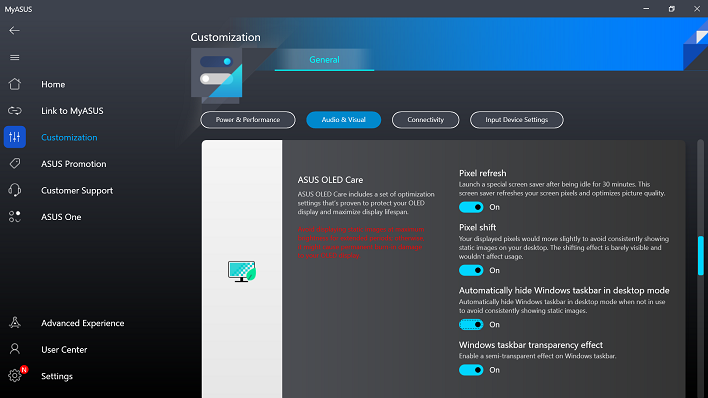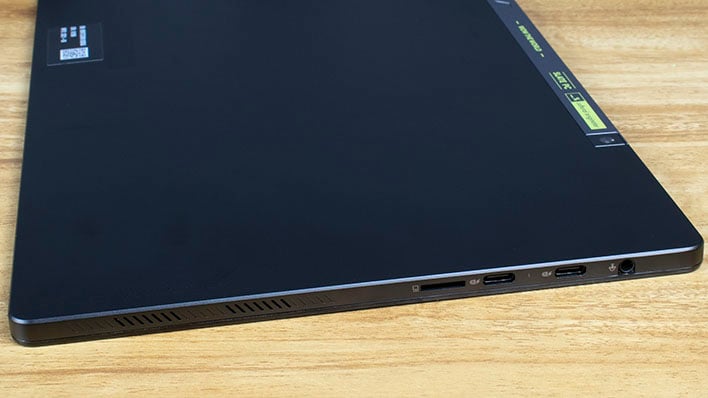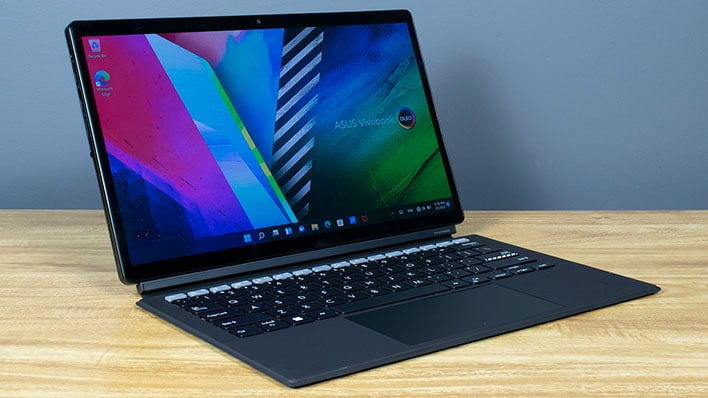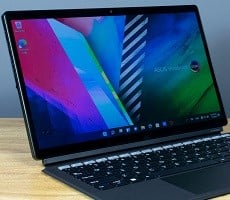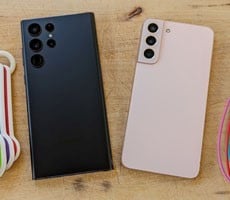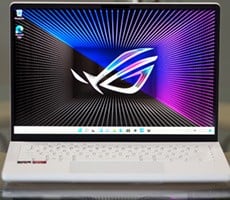ASUS Vivobook 13 Slate OLED Review: Affordable 2-In-1 Beauty
Vivobook 13 Slate OLED T3300 Software Experience
ASUS ships the Vivobook 13 Slate OLED T3300 with Windows 11 Home pre-installed, complete with the infuriating Default Apps behavior of Microsoft's successor. With multiple prompts to stick to Edge as the default browser, it really cheapens the Windows experience but I suppose we should be used to that sort of thing by now. Otherwise, the ASUS experience here is pretty solid. In addition, Windows 11 has a lot of optimizations for the latest hardware and boots extremely quickly on this device.As far as bloatware, the Vivobook 13 Slate OLED was pretty clean. The only thing we had to remove was a McAfee trial that had apparently already expired. It's unlikely that buyers will have expired software on their laptops, however, as review units tend to ship already configured with a default user and manufacturer-recommended settings in place. Otherwise, every other installed app was part of the Windows installer (Candy Crush, Cortana, etc.), a driver control panel, or a utility to manage the system.
To that third item of system configuration, everything can be managed through the MyASUS app. This is the one-stop shop with system specifications, hardware and diagnostic tests, and feature controls. One of the more interesting ones is how ASUS tries to keep OLED displays free from image retention. By default, ASUS has a screen saver that will kick on if the system is idle for 30 minutes and the app sets the windows taskbar to be translucent. The most amusing effect is that the wallpaper will shift subtly to keep pixels displaying other colors to help combat burn-in. OLED displays do have that downside, after all, and it's in the best interest of OLED PC users to leave these features on to help the screen last as long as possible.
MyASUS also includes the company's new screen sharing technology, which is dubbed GlideX. This two-way sharing app allows the PC to mirror a phone screen, complete with mouse and keyboard support, or use the phone as a secondary display for what needs to be a pretty small window, unless you're pairing a tablet. Sharing is initiated with two parts: a Windows app, provided by ASUS and available for download on the Microsoft Store, and a mobile app for either iOS or Android, downloaded from the Apple App Store or Google Play. We took it for a spin, and there are a handful of scenarios where this works out in interesting ways, but there's a caveat, which we'll get to in a moment.
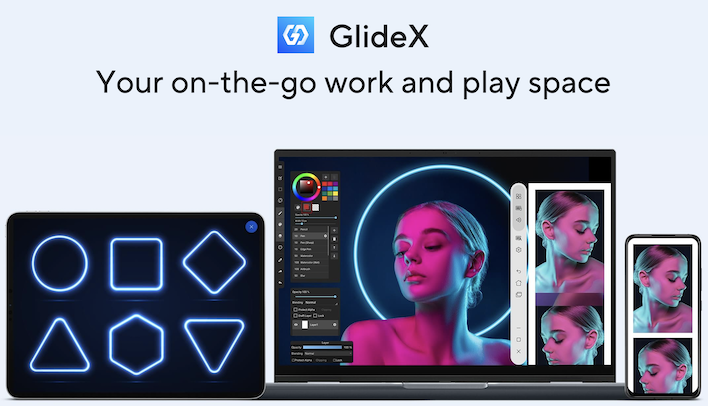
First of all, responding to texts using a keyboard instead of the device's on-screen keyboard is a bit of a relief. Microsoft's Your Phone app, along with Dell Mobile Connect, allow similar screen sharing and PC-focused input, so users who are familiar with either of those will feel at home with GlideX's Screen Sharing feature. The similarly named Screen Extend goes in the opposite direction, however. You can use your device as a second screen. Apple provides Side Car in macOS which can use an iPad as a wireless screen for a Mac, and that's basically how this works. Use the device either wirelessly or wired as a display, to use the tablet as a second screen. This is handy for presentations or throwing chat apps onto a blank canvas.
What's irritating about GlideX is that it's a subscription service. The free tier shows ads all the time, and has a bunch of limitations: Screen Extend is limited to just 480p or 720p video at 30 fps and wired support is nowhere to be found. There are three tiers of GlideX ranging from $0.99 to $5.99 a month that take away ads, add wired connectivity, and allow 60 fps at higher resolutions. Finally, the Ultimate tier allows for extending to two devices at the same time. This is not really a great deal, considering the fact that you can just buy self-contained 15.6" mobile displays that connect via USB on Amazon, so this feels like a cash grab.
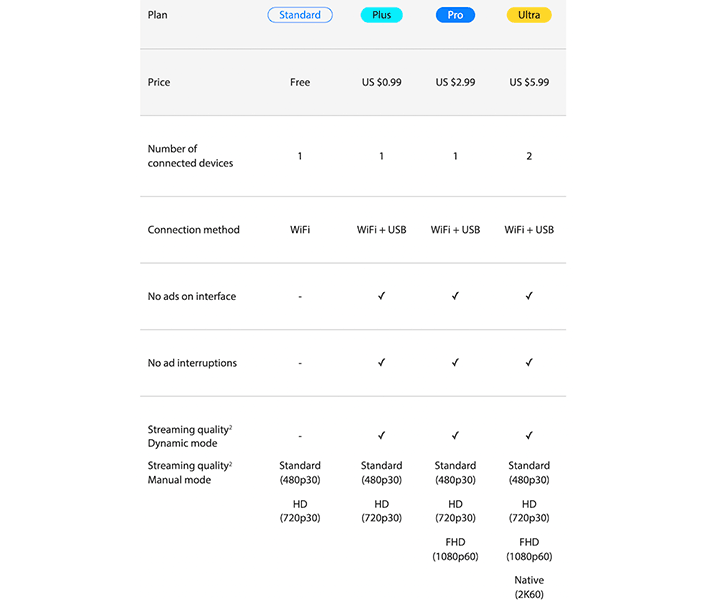
For example, Dell gives away Mobile Connect for free on its hardware, and both it and Microsoft's Your Phone have all the same phone sharing and notification functionality that GlideX does. Even Apple uncharacteristically doesn't charge for this functionality on its hardware. On the other side, there are a host of tablet apps on Google Play or the App Store that allow using an Android tablet or iPad as a secondary display. There are free ways to use a tablet as a wireless display. GlideX is interesting enough, but the subscription model doesn't really hold up here. If GlideX provided some sort of new functionality or special integration, we'd give it more consideration, but it feels incomplete. There's not even file sharing between devices in the current version.
A Petite, Portable Cloud Gaming OLED Beastie
Suffice it to say our 3DMark results on the previous page preclude this system from gaming entirely on its native hardware, but does that mean there's no way to get your game on? Actually, no. There are plenty of streaming options: NVIDIA's GeForce NOW is well-optimized and gives a lot of performance at a relatively low monthly price. Microsoft's XCloud GamePass streaming service is still technically in beta, but it's starting to come on strong. As long as the Wi-Fi and Bluetooth can keep up (and on the client side, this system definitely can), a decent gaming experience should be just a click or two away.To test this theory out, we paired the ever-fabulous 8bitdo Pro 2 controller to the system and fired up GeForce Now. The result was surprisingly good. When we tested the RTX 3080 tier, we did so on an Apple Mac mini and a beefy desktop, both of which have more compute chops than the Vivobook 13 Slate OLED. Regardless, gaming on the Vivobook's OLED display looks just as good as any other motion video. Because of our fat internet pipe and the Vivobook's Intel Wi-Fi 6 radio, lag was kept to a minimum and streaming quality could remain high. Playing games this way was just as fun as it was on a higher-powered system, and this is really just the kind of PC that NVIDIA targeted with GeForce NOW. They make a really great pair, assuming you already have a Steam, Epic, Origin, or Ubisoft library of games to play. GamePass Ultimate customers can also play their GamePass library for free on XCloud, though, saving quite a bit more money.
ASUS Vivobook 13 Slate OLED Conclusions
The ASUS Vivobook 13 Slate OLED T3300 is a very interesting device. On the one hand, its pedestrian low power Intel processor can be something of a turn-off. Just compare any of our recently reviewed ultraportable laptops to this machine, and it can look like something of a downer. It's less than half as fast as a whole host of Tiger Lake and Zen 3-based laptops in the Speedometer benchmark, for example. On the other hand, browsing the web with this device works just fine. In fact, we'd call the performance downright pleasant in a lot of ways. The Vivobook is far from a productivity workhorse, but its PCMark Applications and web performance are plenty for the average home user. Subjectively, it's certainly fast enough that we weren't constantly waiting on the machine. Page load times are minimal on all but the heaviest websites, and streaming apps certainly are light on the CPU. And if you want to game, as we demonstrated above, streaming services do just fine.Where ASUS really won with the Vivobook 13 Slate OLED is the OLED display in this price range of device, especially when you consider how much smartphones with OLED displays can cost these days. Colors pop, blacks are dark, and video looks outstanding. It's capable of HDR video, although the brightness tops out at a bit north of 500 nits so it won't sear your retinas. OLEDs have their own potential pitfalls with burn-in and ABR potentially putting a damper on things, but ASUS has a lot of experience with OLED laptops at this point and therefore can provide some fairly intelligent tools to help keep it under control right out of the box. In short, the potential inherent trade-offs of OLED displays aren't much a concern here.
There are plenty of other features to provide value even if the hardware isn't super fast. First of all, battery life is pretty outstanding, even if it can't quite keep up with the Snapdragon 8cx's 24-hour runtime. The included keyboard and kickstand work pretty well with a couple of caveats, but the most important thing -- the typing experience -- is very solid. The included active stylus is fast and sensitive to pressure changes and even the protective pouch ASUS included has enough padding and is of high enough quality that we trust it to keep the system safe. All of this is something that manufacturers of more premium systems (Microsoft and Apple we're looking at you) would use to drive the prices even higher.
Speaking of pricing, the Vivobook 13 Slate OLED is meant to be pretty affordable for an OLED notebook. Mind you, we've been calling this thing affordable and not cheap, and that's because it is. The base model still has the Pentium Silver N6000 and of course that beautiful OLED display, but only 4 GB of LPDDR4x and a 128 GB eMMC module instead of the speedy WD SSD that's in our notebook. That entry-level model is priced at $599 and it does include the keyboard and kickstand, which is a pretty solid deal. Microsoft's Surface 3 starts at $399 for a similar internal configuration but with a Pentium Gold and less internal storage. Microsoft's entry-level Surface lacks the pop of this gorgeous OLED display and also does not include the keyboard, which would jack its price up even more. Pricing for the model we tested, on the other hand, hasn't quite settled down yet, as Vivobook 13 Slate OLED T3300 just started shipping this month (February '22).
This all makes our conclusions a little trickier. On one hand, the Vivobook 13 Slate's entry-level performance isn't very exciting, and laptops with similar performance are available at a much lower price, due to the added cost of the detachable form factor and of course this system's gorgeous OLED display. On the other, getting that same form factor and OLED is only possible in other much more expensive laptops. We were hopeful that doubling the RAM and storage, along with the switch from eMMC to NVMe, wouldn't cost much more than $200 and for now, with a listing on Amazon at a $749.99 retail price currently, that looks to be a safe bet. At its current price, a highly portable OLED laptop Windows 2-in-1 hybrid that can handle light computing tasks and excel in content consumption could be a solid deal, depending on your needs.
Regardless, this low-to-mid price range area of the market is full of trade-offs, but the Vivobook 13 Slate OLED opens up a new opportunity for some folks that really care about display quality. The trade-off, of course, is that you're stuck with some inherent compromises here for the life of the device. However, it's undeniable that ASUS has created a unique value proposition for folks whose use case and budget fits the Vivobook 13 Slate OLED. We haven't seen another Windows device quite like it in this price range until now.

|
|

